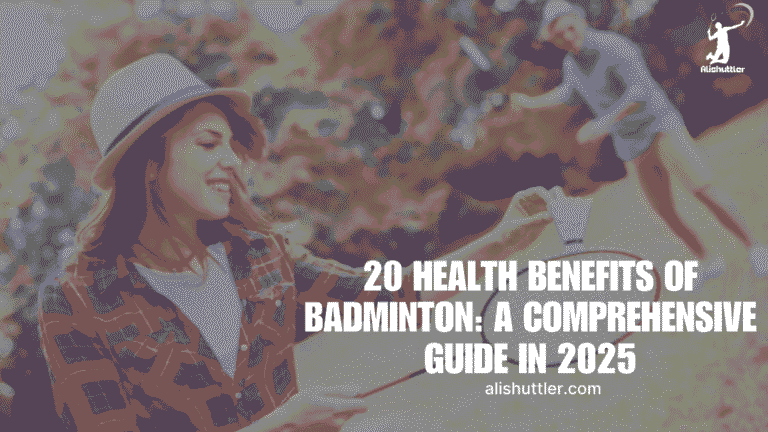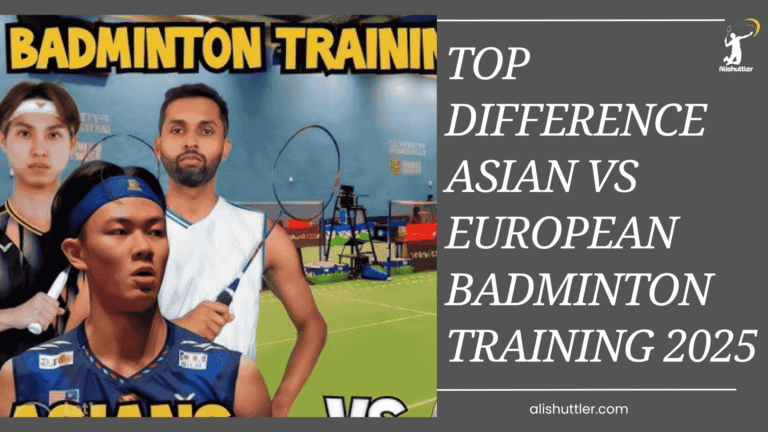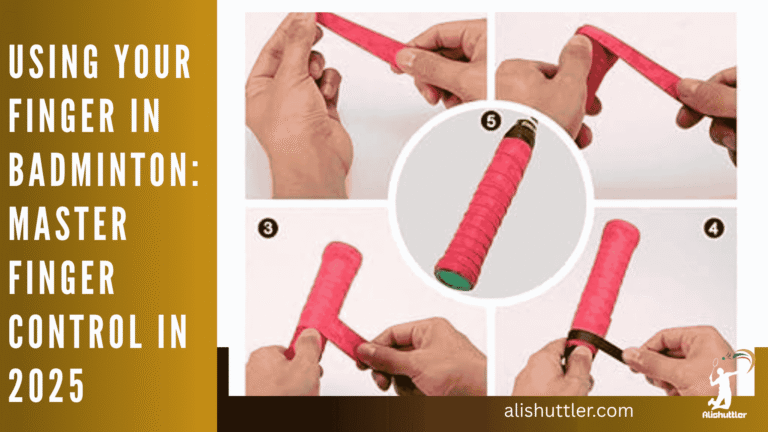What is practice badminton alone? Simple drills and routines to improve footwork, swing and aim without a partner.
Lots of practice against a wall, some shadow footwork, some hit shuttles up for control. Practice badminton alone. Solo practice accommodates hectic schedules and develops ability at every level!
It keeps things budget-friendly and simple to implement. The main body will discuss explicit steps for single-player routines and advice that apply to most players.
Your Solo Court
Solo Practice Badminton Alone develops skill, muscle memory, and confidence. With the proper space and some ingenuity, you can work on footwork, serving and even shot accuracy without a partner or coach. A solid solo setup begins with selecting a secure, distraction-minimal location, indoors or outdoors, and maximizing humble equipment.
Select a wall that can withstand the shuttlecock being hit against it, over and over. Target spots at varying heights to practicing shot placement. Make sure the floor is clear and non-slippery. Maintain good lighting and minimize breakables. Keep your gear—rackets, shuttles, shoes—close at hand. Wear shoes with proper grip to avoid injury.
Wall Setup
A brute wall is the ideal incubator for solo work. Seek out concrete or brick as these surfaces won’t get destroyed by shuttlecock impacts. Plaster or drywall tends to chip and doesn’t always stand the test of time.
Painter’s tape or chalk is great to create targets at different heights and locations. Try to hit the corners, low drives, or high clears. This promotes shot precision and simulates match play. Try aiming for certain marks when hitting shuttles, varying speed and angle for a more realistic drill.
Switch up your wall drills by flipping the angle. Step out to the side for a cross-court shot or come in for net play. Wall rally drills develop consistency. Maintain the shuttle in play for as long as possible and you’ll enhance your control and concentration. As an extra challenge, time yourself for 30 seconds and tally your aces.
Home Space
Not all of you have full courts at your disposal but even a small room or cleared hallway will do for rudimentary drills. Just make sure it’s a clutter-free corner with enough ceiling height for overhead strokes. Keep your racket, shuttlecocks and shoes stored close by so you can get to practice in a snap.
In addition, good lighting and ventilation keep you comfortable during extended sessions. Warm up prior to every drill it will help you avoid injury and enhance your flexibility. Experiment with active maneuvers such as arm circles and lunges. This simplifies getting going on footwork drills, like corner-to-corner or split-step patterns for 30-60 minutes.

Outdoor Options
Outdoor courts or open spaces such as parks can provide a new challenge for solo practice. Concrete and other hard surfaces are excellent for speed work, while grass can assist with balance and agility. If it’s safe, use chalk to mark lines for footwork drills. Training in different weather gets you ready for real match conditions and makes you adjust your style of play.
Solo drills such as shadow badminton, imagining points, and mimicking strokes develop muscle memory and polish technique. Alternate footwork and serving practice to make the most of your session. Or challenge yourself with a timer for short, high-intensity intervals, or even spectate professional players’ videos for extra insight and motivation.
Essential Solo Drills
Solo Practice Badminton Alone drills help you develop fundamental skills, stay on your toes, and polish off those rough edges. Working solo in practice allows you to experiment at your own pace, refine your technique, and innovate with restricted equipment and space.
Here are five drills every player can use to get better alone:
1. Wall Rally
Wall rallies are basic but super powerful. Basically, set up about 2–3 meters from a flat wall, and hit shuttles. Attempt to maintain a consistent rally targeting the same place with each return.
Mix the pace and force of your strokes. Hit forehands and backhands, and experiment with smashes, drives and clears. It teaches you rhythm, timing, and shot control.
For challenge drill, take two shuttles and smash them consecutively. This develops both speed and reflexes. Keep track by seeing how many you make in a row, and try to top your personal best.
2. Shadow Movement
Shadow movement drills focus on your footwork and court coverage. Position yourself in the middle of your court or living room. Switch to every corner front left, right, back left, right, then ALWAYS back to the middle.
Stir in fast lunges, side steps and forward sprints to mimic actual match play. You can use an agility ladder to add additional speed and increase balance.
Work your way from midcourt to the corners, and even between two corners, say right front to right rear. If you can, record yourself and then monitor your form and balance. Good footwork is essential for moving around the court quickly.
3. Serve Precision
Working on serves Practice Badminton Alone is easy, but important. Shuttle, lob it up, and practice low serves, flick serves, and high serves. Here’s a fun way to add variety to place targets with tape, or small objects on the opposite side of the net, and serve at them.
Switch up your serve angle and speed. Verify your results by tallying how many times you struck your mark. This allows you to identify trends and determine what you need to focus on.
Good serve habits go a long way in matches.
4. Shuttle Juggling
Shuttle Juggling is excellent for hand-eye coordination. Without your racket, execute the following drill: hold your racket and bounce a shuttle on the strings for as long as possible.
Attempt two shuttles at a time if you’re feeling ambitious. Alternate between easy bounces and side-to-side tapps. It cultivates patience, racket feel, and control.
Even a couple of minutes a day goes a long way.
5. Grip Switching
Switching grips fast is a skill worth cultivating. Work your backhand-to-forehand grip and back again, over and over again.
Stir in grip changes into all your Practice Badminton Alone drills. Hang loose and don’t choke the handle too hard. Experiment with a couple of grip styles to discover what suits each shot best.
This allows you to respond faster when the shuttle flies fast in an actual match.
Advanced Techniques
Solo badminton practice can be more than just fundamentals. With a combination of discipline, creativity, and effective exercises like shadow footwork exercises and solo smash drills, a player can develop advanced skills solo. Hands-on drills shadow play, solo rallying, and Practice Badminton Alone serving drills let you hone technique, movement, and consistency.
Deceptive Shots
| Technique | Description | Example Drill |
|---|---|---|
| Fake Shot | Pretend to hit one type of shot, then change at the last moment | Practice slow swing, then quick wrist flick to change direction |
| Wrist Flick | Use a sharp wrist snap to alter shuttle direction unexpectedly | Repeated net shots with sudden wrist flicks to each side |
| Body Feint | Shift body weight or shoulders before executing a shot | Practice lunging one way, then hitting cross-court |
| Shot Selection Analysis | Review practice footage to spot when to add deception | Record solo matches, focus on missed chances for fake-outs |
| Experiment in Practice | Test new fakes during solo rallies or with a virtual net | Hit alternating soft and hard shots against a wall or marked line |
Shot Consistency
Muscle memory is cultivated through consistent repetition. Repetitive drills such as forehand clears, or drop shots, hit one after the other enhance precision. Another way to build consistency is by practicing solo rallying, where you take turns hitting shuttles from forehand to backhand sides.
Establish targets on the court, like cones, or taped areas and go for them on every rally. Monitor your progress by noting the location of each hit. Examine your outcome, then modify grip, swing or stance accordingly. Match-like scenarios, like moving from front and rear corners with shadow footwork, put you under pressure and mimic play.
On breaks, work on your serve, with your non-racket leg trailing for optimal balance and swing force. Regular self-evaluation is key. Record your practice, play it back, and look for patterns in missed shots or weak areas. This helps direct your focus for the next session.
Backhand Power
Developing a powerful backhand requires a combination of form and muscle. Begin with specific drills, such as volleying backhand clears against a simulated net, or a taped off section of the wall, emphasizing complete arm extension and wrist snap.
Take practice shots from varying distances, like deep in the rear court or up near the net, to inject range and versatility. Just add weight training. Utilize Practice Badminton Alone, player dumbbells, or resistance bands to increase arm and shoulder strength. Crucial exercises such as wrist curls, forearm rotations, and shoulder presses enhance not only backhand power but also stamina for long rallies.
Examine your backhand swing. Mind your stance and hold. A straight wrist, relaxed grip, balanced stance these all make a difference in terms of control and power.
Skill Progression
Add these advanced techniques to your week. Shadow play assists you visualize competitors and aim particular strikes. Mix up your sessions with drills alternating between footwork and serve practice.
Watch doubles words to learn serve tricks, a low backhand serve to practice Badminton alone.
Physical Conditioning
Physical conditioning determines how efficiently you move, react and endure through rapid badminton rallies. When you train solo, you’re developing the core strength, stamina and footwork that accounts for roughly 30% of your game. The remaining 70% relies on racket skills, teamwork and mental toughness.
Still, prepping your body helps you play longer, make less errors, and recover better. Below is a quick look at solo exercises for Practice Badminton Alone and what they help you achieve:
| Exercise Type | Example | Main Benefit |
|---|---|---|
| Plyometrics | Jump squats | Power, speed |
| Core workouts | Planks, Russian twists | Stability, balance |
| Agility ladder drills | In & out, side shuffle | Foot speed, coordination |
| Interval training | Sprints, bike intervals | Endurance, stamina |
| Weightlifting | Dumbbells, resistance band | Strength, injury prevention |
| Shadow play | Court movement drills | Technique, fitness |
| Solo rallying | Forehand/backhand shots | Consistency, stamina |
| Footwork drills | Six-point court movement | Agility, precision |
| Cardiovascular exercise | 5 KM biking | Heart health, recovery |
Explosive Power
Developing explosive power is important for quick, powerful shots and leaps. Begin with plyometric moves such as jump squats or lunges to fire up your legs. These assist you in driving off the floor speedily and making high shots with more ease.

Sprinkle in some high intensity one-paced training, such as sprints or squat jumps, aiming for all out effort for 10-20 seconds. Pause a moment between sets. This approach trains your muscles to react quickly and with greater power, crucial during rallies or direction changes.
Every so often, test your jump height or sprint time to monitor these explosive gains.
Core Stability
A powerful core stabilizes your body, enables you to rotate rapidly, and maintain balance on the field. Planks and Russian twists are easy ways to get those deep muscles fired up. See if you can maintain each plank for 30–60 seconds and increase as you strengthen.
Balance drills, standing on one leg, and a balance board assist with body control. Just make sure to keep your core tight when you swoop across the court picking up a drop shot or smashing.
Test your core strength with extra reps or longer planks every week.
Agility Ladders
Agility ladders are fantastic for foot speed and zippy moves on court. Use them for drills such as side steps, one-legged hops and fast in-and-out steps. These drills stir up your lower legs and condition your body to shift in any direction.
Mix up your dribbling work those muscles differently, attempt crossover steps or zigzag sprints. Always concentrate on quick, light steps.
Time yourself on each drill, but try to get faster or more accurate each time.
Endurance and Stamina
Interval training, such as sprinting or biking 5 KM, builds the stamina you need for long matches. Interchange fast and slow to condition your heart and lungs.
Resistance training with dumbbells or bands, on the other hand, helps you last longer and helps you avoid injury. Shadow play and solo rallying build your fitness and sharpen your skills.
Stamina is what keeps your shooting crisp, even when you’re gassed.
Training Smarter
Training for badminton by itself requires a smart plan and smart tools. Incorporating effective exercises like racket swing drills and shadow footwork exercises can enhance your technical skills. Smart practice is more than just repeating drills—it’s about using feedback, training aids, and focused sessions to improve all elements of your game.
- Break sessions into focused chunks (footwork, serving, wall work, etc.)
- Use training aids such as shuttle machines, resistance bands, or cones.
- Mark six court points with shuttles for agility drills.
- Combine footwork with serving to build technique and recovery.
- Set clear session objectives and track progress.
- Use video to review technique and measure improvement.
- Combine on-court and off-court training for well-rounded development.
- Watch pro videos before practice to model technique.
Video Feedback
Capturing your own sessions provides you with a reality check on your abilities. A smartphone or tablet works great for this. Position it from a few different angles to capture your footwork, racket movement and shot types.
Going over these videos allows you to identify where your form is falling apart. Perhaps you identify a vulnerable backhand or off-balance footwork to the backcourt. Slowmo playback allows you to hone in on specifics, like how you hold the racket or how your feet fall post-lunge.
Sharing clips with a coach or more skilled friend can provide new perspectives. They can highlight things you overlooked or recommend drills to address particular problems. Over time, comparing new and old footage is a great way to monitor if your drills are doing their job and if your movement is getting crisper.
Training Aids
Tools such as shuttle feeding machines can make single player practice more engaging. A machine can shoot shuttles at you at consistent intervals, replicating game pace and providing you with a continuous barrage. This comes in particularly handy when working on smashes or net kills.
Resistance bands take solo drills to the next level. Wrapping bands around your legs or arms as you do footwork or shadow swings develops strength and flexibility. They assist you in working on speed and stability, which are critical for fast direction changes.
Other more focused tools, such as cones baked into footwork paths, or weighted rackets for strength, help you target specific weaknesses. Experiment with various supplements and note which ones yield superior outcomes, so you can optimize your schedule for maximum benefit.
Session Planning
A plan for each session keeps you focused and prevents procrastination. Well-structured sessions might look like this: 30 minutes of footwork to the six court points, 30 minutes practicing serves during footwork breaks, 30 minutes hitting shuttles against the wall, and another 30 minutes of advanced footwork.
Change drills frequently to keep practice fresh. Combine this with multi-directional stroke practice with footwork which can enhance your reaction time by as much as 20%! If you see gains on particular skills, refresh your plan to address new weaknesses or objectives.
A schedule, whether it’s 3x a week or more, builds consistency. It’s sticking to a discipline of timing and goals that brings consistent progress.
Goal Review
Checking your goals keeps you focused on your Practice Badminton Alone training. If you hit a plateau, tweak your racket swing drills.
The Mental Game
Solo badminton practice is about more than skill; it also encompasses effective exercises for mental development. To reach new heights, it’s crucial to focus on the mental game. A player’s mindset directs their development, defines their play in high-pressure moments, and pulls them through rough patches, making mental skills as critical as Practice Badminton Alone training drills.
Visualization
Imagining rallies and winners allows players to envision the court prior to taking the court. Imagine attacking the ball with intention, crisp shots and controlled point finishes. This visualization can be incorporated into a warm-up or it can be a separate activity.
Routine imagery can increase confidence and assist in preparing for actual match conditions. Other elite players view professional matches and then shut their eyes, picturing themselves executing like moves. This not only hones their mental abilities, but assists in getting in a good head space before practice or competition.
Overcoming Plateaus
That’s why so many players hit a wall in solo practice. First, identify which skills are bogged down perhaps your footwork, backhand, or serve consistency. Jot these down to keep your goals clear.
Set yourself a new challenge, like nailing a new serve or pushing your pace in shadow drills. Spice up your regimen with different drills or rotate between footwork, shadow Practice Badminton Alone, and serving practice. This shatters the tedium and keeps your mind active.
If you can, solicit input from a coach or peer. New eyes will catch patterns or errors you might overlook. Even if you’re on your own, sending in a play video can add fresh perspective and nudge you toward progress.
Building Focus
Mindfulness will help you stay in the moment on court. Experiment with paying attention to your breath or employing quick cues to return your wandering mind. A silent room, without noise and interruption, encourages deeper focus.
Before you begin, share a few deep breaths to soothe nerves and ground your intention for the class. Observe when your mind wanders and softly return it to the work. Checking in with yourself after each drill assists in keeping tabs on your concentration and identifying opportunities for improvement.
Fatigue and stress can really interfere with your attention. Rest and recovery are essential for maintaining your mental acuity through longer practice sessions.
Mental Strategies for Pressure
Teach yourself good self-talk when the going gets rough. Remember your power, and your history of little victories in play. Mental hacks such as deep breathing or backing up for a moment can help reset under pressure.

As a result, some players benefit from following guided mental training routines — which can be created either independently or in collaboration with a coach. Keep in contact with your body, as injuries and fatigue can affect your mental game.
Final Thoughts
It pays off to practice badminton alone. You get to take things at your own speed on your own time about what’s important to you. Killing shuttles against a wall hones your targeting. Footwork drills keep your moves crisp. Shadow swings help you identify gaps in your play. Push-ups and sprints build your speed and strength.
Brief respites keep your brain fresh, so you don’t get dull. Most of the top players begin solo, and it works for every level. Experiment with various drills and see what clicks. Note its practice scores as you evolve, and track your skills over time. To advance, introduce one new drill per week or small goals. Post your victories or advice—maximize your solo drill.
Frequently Asked Questions
Can I improve my badminton skills by practicing alone?
Indeed, you can practice alone with solo smash drills to improve your footwork, accuracy, and strength — all important for better gameplay.
What equipment do I need to practice badminton alone?
You’ll require a powerful racket, shuttlecocks, and either a badminton court or a suitable wall for effective exercises.
How can I practice footwork without a partner?
Identify spots on the court and jump back and forth between them as fast as you can. Incorporating racket swing drills will help develop speed, balance, and agility.
Are there solo drills for improving badminton shots?
Yes, attempt wall rally drills as effective exercises. Practice badminton alone — wall hit for skill development.
How does solo training help my mental game?
It lets you set goals and measure progress in your badminton training, which fortifies your mindset.
Can physical conditioning be done without a coach?
Totally. Routines such as running, skipping, and strength training build stamina and strength – all effective exercises without a coach.
How often should I practice badminton alone for best results?
Try to shoot for a minimum of three times a week, incorporating effective exercises like racket swing drills and badminton training. Consistent individual practice ensures that you move forward at a steady pace and stay sharp.






